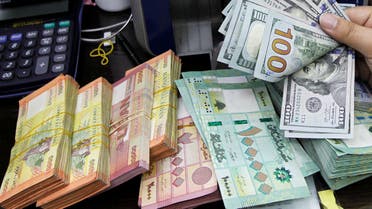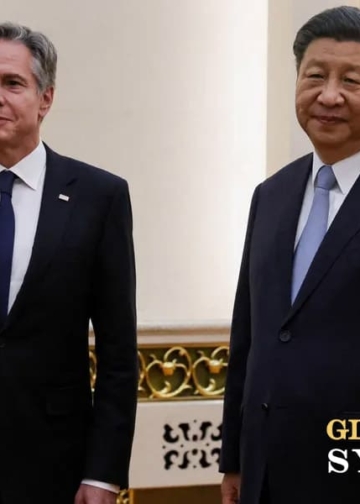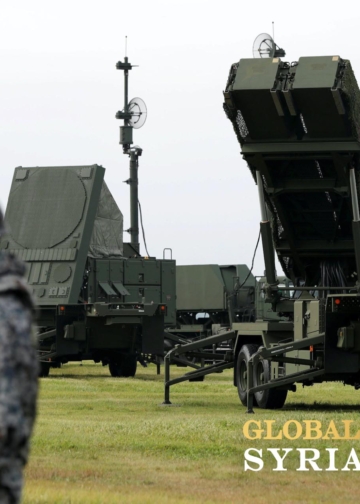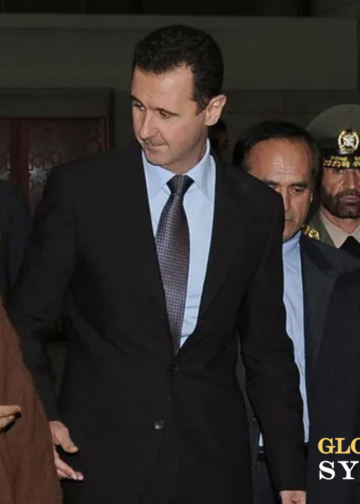Coinciding with the Lebanese pound falling to a record level of 100,000 pounds per US dollar and the resumption of an open-ended strike by Lebanese banks to protest the lawsuits against them, the Lebanese economy faces a serious dilemma.
Causes and backgrounds
In practice, experts argue that the free fall of the Lebanese lira is a natural consequence of the political and monetary authorities’ failure to find a solution and approve of reforms.
While the Central Bank of Lebanon cannot intervene with sustainable solutions to control the chaos of the parallel market, the latter controls the fate of the lira. Recently, the parallel market has gained a strong momentum and a kind of legitimacy, with Lebanon entering an almost comprehensive phase of dollarization after the authority allowed institutions and companies to price the dollar according to the value of the dollar on the black market.
Ziad Abdel Samad, Executive Director of the Arab NGOs Network for Development, says the pound is expected to drop to 100,000 against the dollar because Lebanon has been witnessing a continuous state of collapse for 3.5 years. year. The irony is that the political leadership watches from the sidelines without announcing an emergency recovery plan.
Ziad compares this to the speed with which the US administration took action when the Silicon Valley Bank (Sicon Valley SVB) collapsed, putting the bankrupt bank under its direct control.
Journalist Azza Hajj Hassan, an expert in the field of economics, confirms that the reasons that led to the depreciation of the Lebanese lira continue economically and politically, that the problem has expanded to cover all sectors, and that the most influential one is the banking sector.
Lebanese banks are entering the second phase of their open strikes to protest court orders against some that call for the recovery of deposits and the prosecution of other banks and bankers.
The money market in Lebanon is witnessing major turmoil as the strike and banking sector restructuring have not been accelerated, and finally, the government has failed to refund depositors’ money.
Coinciding with the Lebanese pound falling to a record level of 100,000 pounds per US dollar and the resumption of an open-ended strike by Lebanese banks to protest the lawsuits against them, the Lebanese economy faces a serious dilemma.
Causes and backgrounds
In practice, experts argue that the free fall of the Lebanese lira is a natural consequence of the political and monetary authorities’ failure to find a solution and approve of reforms. While the Central Bank of Lebanon cannot intervene with sustainable solutions to control the chaos of the parallel market, the latter controls the fate of the lira.
Recently, the parallel market has gained a strong momentum and a kind of legitimacy, with Lebanon entering an almost comprehensive phase of dollarization after the authority allowed institutions and companies to price the dollar according to the value of the dollar on the black market.
Ziad Abdel Samad, Executive Director of the Arab NGOs Network for Development, says the pound is expected to drop to 100,000 against the dollar because Lebanon has been witnessing a continuous state of collapse for 3.5 years. year. The irony is that the political leadership watches from the sidelines without announcing an emergency recovery plan.
Ziad compares this to the speed with which the US administration took action when the Silicon Valley Bank (Sicon Valley SVB) collapsed, putting the bankrupt bank under its direct control.
Journalist Azza Hajj Hassan, an expert in the field of economics, confirms that the reasons that led to the depreciation of the Lebanese lira continue economically and politically, that the problem has expanded to cover all sectors, and that the most influential one is the banking sector.
Source: Global Justice Syria News + Al Jazeera



















